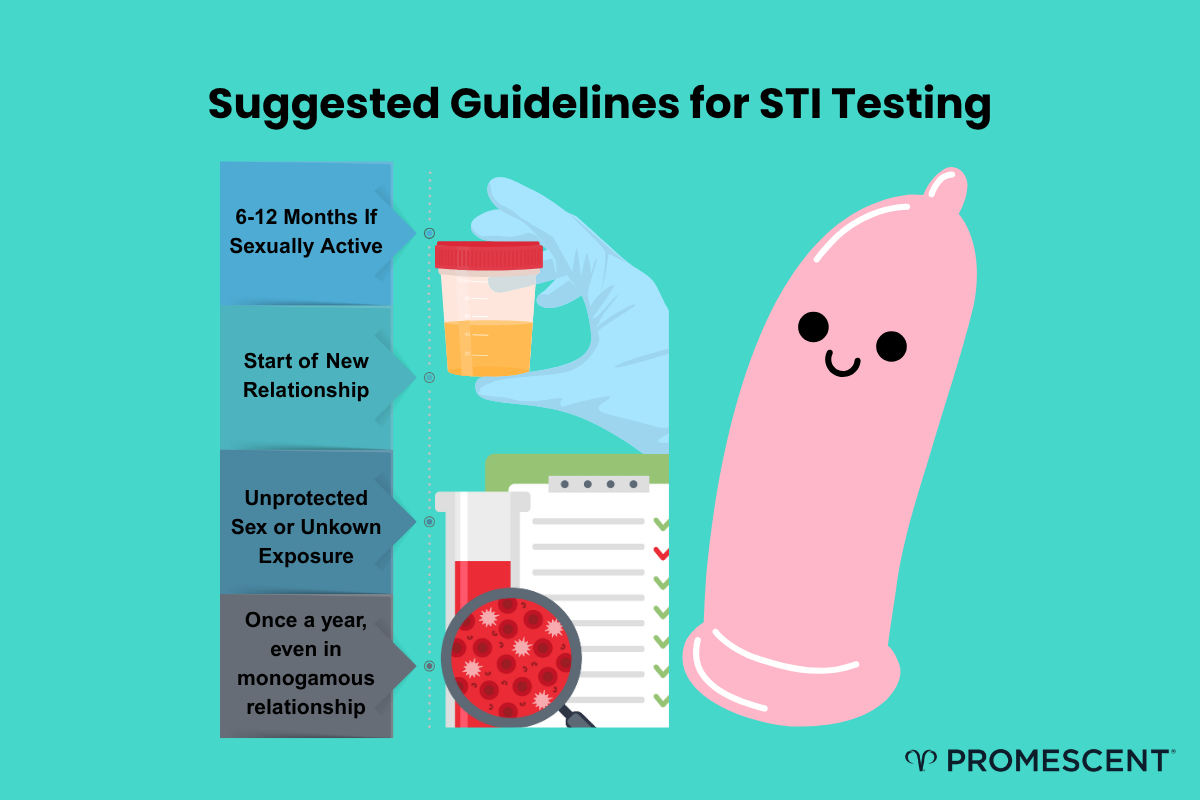When we talk about great sex, we usually focus on pleasure, connection, and chemistry. Staying safe is just as essential to keeping things fun, healthy, and stress-free. Whether you’re exploring new relationships, enjoying a long-term partnership, or somewhere in between, safe sex isn’t about limiting pleasure. It’s about protecting your body, your peace of mind, and your partner.
In today’s world, safe sex goes far beyond high school health class. With a wider range of protective tools and smarter, more respectful conversations around intimacy, staying safe means being informed, prepared, and empowered. Let’s explore what that looks like in real life, and how you can feel confident, happy, and healthy in bed.
Understanding Safe Sex: It’s About More Than Just Condoms
When most people hear “safe sex,” they immediately think of condoms. But a truly safe and satisfying sex life means looking at the full picture: physical protection, emotional readiness, open communication, and mutual respect.
Here’s what safe sex really includes:
- Protecting against STIs and unintended pregnancy: Using barrier methods, getting tested regularly, and knowing your options.
- Having open, honest conversations with partners: About history, testing, and boundaries.
- Understanding your own body and comfort levels: So you can advocate for what feels good and safe for you.
Common Myths We Still Need to Bust
Let’s clear up a few lingering misconceptions:
- “You can tell if someone has an STI.” This isn’t true. Many STIs show no symptoms, which is why regular testing matters.
- “Pulling out is safe enough.” It’s not a reliable method for preventing pregnancy or STIs.
- “We’re both clean, so we don’t need condoms.” Unless you’ve both been recently tested and are in a monogamous relationship, it’s a gamble.
Understanding safe sex means embracing knowledge, not fear. It gives you more control, more confidence, and ultimately, more pleasure.
When it comes to safe sex, having the right tools on hand can make all the difference. Not only do they protect your health, but they also boost confidence, reduce stress, and help you stay in the moment. Let’s walk through the essentials every sexually active adult should consider.
1. Condoms (Male and Female)
Condoms are still the most accessible and effective way to prevent both STIs and unplanned pregnancies, when used correctly. Today’s options go far beyond the basic latex version:
- Latex, polyurethane, or polyisoprene: Choose what works for your body, especially if you or your partner has sensitivities.
- Textured, ultra-thin, lubricated: Tailor the experience to your preferences.
- Female/internal condoms: A less common but equally effective option that gives more control to the receptive partner.
Buy condoms online here
Store condoms in a cool, dry place (not your wallet), check expiration dates, and never use oil-based lubricants with latex.
2. Dental Dams
These thin latex or polyurethane sheets are designed for oral sex and often overlooked, but they’re a valuable tool for STI prevention, especially for oral-vaginal or oral-anal contact. They’re discreet, easy to use, and promote safe pleasure without compromise.
3. Lubricants
Lube isn’t just about making things feel better. They play a role in safety too. Friction can cause small tears that increase STI transmission risk and make sex uncomfortable.
- Water-based: Safe with all condoms and sex toys.
- Silicone-based: Long-lasting and great for water play (but not always toy-friendly).
- Avoid oil-based lubes with latex condoms, as they can cause breakage.
Promescent Delay Spray is a great addition for those who want to prolong pleasure without compromising safety. It’s designed to work with latex condoms and water-based lubes, offering control with peace of mind.
4. PrEP and PEP
Both are FDA-approved and increasingly accessible for those at higher risk. If you’re in a non-monogamous relationship or have new partners, these options are worth discussing with a healthcare provider.
Regular Testing: Know Your Status, Own Your Health
Getting tested for sexually transmitted infections (STIs) isn’t just a one-time checkbox, it’s an essential part of taking care of your body and your partners. Testing helps catch infections early (often before symptoms show up), prevents transmission, and opens the door for honest, informed conversations.
Why Testing Matters
Many STIs are “silent,” meaning they can go unnoticed for months or even years. Chlamydia, gonorrhea, HIV, herpes, and HPV can all be present without symptoms and can still be spread. Regular testing:
- Protects your current and future partners
- Reduces stigma by normalizing sexual health care
- Builds trust in relationships
Testing is not a judgment of your behavior, it’s a sign of responsibility and respect.
How Often Should You Get Tested?
Here’s a general guide (but always consult your provider for personalized advice):
- Every 6–12 months if you’re sexually active with new or multiple partners
- At the start of a new relationship
- After unprotected sex or a known exposure
- At least once a year, even in a monogamous relationship, for peace of mind

Some STIs, like HIV, have a window period before they show up in a test, so timing matters too. When in doubt, test again a few weeks later.
Where to Get Tested
- Primary care provider or OB-GYN/Urologist
- Sexual health clinics or Planned Parenthood
- At-home test kits (confidential and discreet)
- Local health departments (often offer free or low-cost testing)
How to Talk About It
Bringing up testing with a partner can feel awkward, but it doesn’t have to be. You can say:
- “Hey, I get tested regularly and I think it’s important we both know our status before we stop using protection.”
- “Let’s go together.”
Framing it as care, not suspicion, helps normalize the conversation and deepens trust.
Communication Is a Safe Sex Essential Too
When it comes to safe sex, protection is only half the equation. The other half? Clear, respectful, and ongoing communication. Talking about boundaries, desires, protection methods, and health history isn’t just smart. It’s sexy. It builds trust, strengthens intimacy, and makes your sex life better for everyone involved.
Why Talking Matters

Sexual health isn’t something you should have to figure out in silence. Open dialogue:
- Prevents misunderstandings
- Helps you and your partner feel respected and safe
- Paves the way for more satisfying physical and emotional intimacy
How to Start the Conversation
You don’t need to deliver a speech, just aim for honesty and empathy. Try:
- Before things get hot: “Can we talk for a sec about what we’re comfortable with?”
- When discussing protection: “What do you usually use?” or “I brought condoms. What works best for you?”
- When it comes to STI testing: “I got tested recently—what about you?”
It’s okay to feel a little nervous. Most partners will appreciate honesty and maturity.
Navigating Disagreements or Awkward Moments
If someone resists using protection or gets defensive about testing, take a step back. You can say:
- “I really like you, and I want this to be safe and enjoyable for both of us.”
- “I’m not comfortable skipping protection. Can we find something that works for both of us?”
Remember: good sex is mutual. If someone can’t respect your boundaries or health, that’s a red flag.
Consent: The Ultimate Form of Communication
Consent isn’t a one-time check. It’s an ongoing, enthusiastic agreement. It can be sexy, too. Try:
- “Does this feel good?”
- “Do you want to keep going?”
- “Tell me what you like.”
Consent protects both of you and makes everyone feel more connected, secure, and satisfied.
Safe Sex in Long-Term Relationships
Once you’ve been with the same partner for a while, it’s easy to assume you’ve “graduated” from safe sex conversations. But staying healthy in a long-term relationship doesn’t mean letting your guard down. It means staying proactive, communicative, and mutually respectful.
Why Protection Might Still Matter
Even in monogamous relationships, protection can still be relevant:
- Birth control changes: If a partner stops using hormonal contraception, condoms or other methods may be needed again.
- STI testing gaps: If you didn’t test at the start of the relationship or had past partners with unknown statuses, testing is still wise.
- Life happens: Relationships evolve, and so do agreements. If monogamy is ever broken, it’s important to check in health-wise.
Make Testing a Shared Habit
Getting tested together can be a powerful way to support one another. It’s not about mistrust, but it’s about shared responsibility and care.
- Schedule joint appointments or at-home tests
- Use it as a moment to reconnect around your sexual health
- Reassess every 6–12 months or after any changes in the relationship dynamic
Revisiting Boundaries and Birth Control
Even in committed relationships, it’s healthy to periodically ask:
- Are we still on the same page about protection?
- Are we using birth control that works for both of us?
- Do we want to explore new things together? If so, how do we stay safe?
These check-ins don’t kill the mood. They build trust, enhance connection, and often lead to better sex.
Lifestyle Tips for Better Sexual Health
Safe sex doesn’t stop at protection and testing. It’s also about how you take care of your body and mind. The healthier you are overall, the more enjoyable, satisfying, and safe your sex life can be. Here are a few lifestyle strategies that support sexual wellness in and out of the bedroom.
1. Fuel Your Body with Nutrition
Your diet impacts more than energy and weight, it affects hormone levels, blood flow, and stamina.
- Zinc and vitamin D support testosterone and libido
- Omega-3s and leafy greens promote circulation (key for arousal and erections)
- Stay hydrated to support lubrication and endurance
2. Move Your Body
Regular exercise boosts mood, confidence, and sexual performance. It can also:
- Improve erectile function and libido
- Reduce stress and anxiety
- Support hormone balance
Even 30 minutes of walking or strength training a few times a week can make a difference.
3. Prioritize Sleep and Stress Management
Sleep is essential for hormone regulation and recovery. Chronic stress, on the other hand, can lead to low libido, erectile issues, and relationship strain.
- Aim for 7–9 hours of quality sleep
- Use breathing techniques, mindfulness, or therapy to manage stress
- Don’t underestimate the impact of emotional wellness on sexual connection
4. Be Mindful with Substances
Alcohol, cannabis, or other substances can lower inhibitions, but they also impair judgment and increase risky behavior. Moderation is key.
If substances become part of your sex life, be extra intentional about protection and consent.
5. Support Your Body with the Right Products
Supplements and sexual wellness products can play a helpful role, especially when they’re backed by research.
Promescent’s Testosterone Booster or Climax Control Spray offer solutions for men looking to enhance performance, manage PE, or support libido safely and discreetly. These tools can complement healthy habits and improve sexual confidence.
Conclusion: Safe Sex = Better Sex
At its core, safe sex isn’t just about avoiding problems. It’s about creating the best possible experience for you and your partner. When you feel protected, respected, and informed, you’re free to relax, explore, and connect more deeply.
Whether you’re just starting out or deep into a long-term relationship, taking steps to prioritize your sexual health is a form of self-respect, and a gift to your partner. It says: I care about us.
So stock up on the right protection, keep the conversation open, and treat regular testing like the routine act of care it is. If you need a little help along the way—whether it’s a reliable condom, a quality delay spray, or a supplement to boost performance—there are safe, trusted products ready to support you.
Because the truth is: safe sex isn’t boring. It’s empowered. It’s confident. And when done right, it leads to even better, more satisfying sex.
